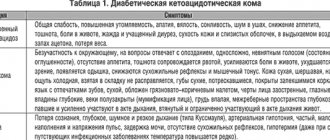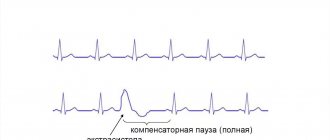Kinds
Types of heart cancer are:
- Sarcoma. Among malignant tumors, the most common one usually affects patients in middle age (around 45 years). There are many types of sarcomas and their characteristics.
- Pericardial mesothelioma. A rare type of cancer, most often affects men, the age of patients varies greatly. Capable of metastasizing to the spine, brain, and nearby soft tissues.
- Primary lymphoma. An even rarer type of tumor is more often observed in patients with various types of immunodeficiencies. This type of heart cancer grows very quickly.
Other types of cancer can also affect the heart and cause heart damage. For example, melanoma, breast or lung carcinoma, kidney cancer - all of this can metastasize to the heart. Leukemia and lymphoma have similar properties. But here we are not talking about heart oncology itself, but about the fact that oncology of another localization invades this organ.
Forecast
The three-year survival rate after removal of single benign cardiac tumors is 95%. After surgical treatment, patients are observed by a cardiologist and cardiac surgeon with mandatory annual echocardiography monitoring for timely diagnosis of tumor recurrence. When multiple tumors are present, the five-year survival rate is only 15%. For metastatic and primary cardiac tumors, the prognosis is considered unfavorable. Radiation therapy and chemotherapy have no effect on the prognosis, and surgical treatment is considered ineffective.
Symptoms
The issue of symptoms is very complex. In the first stages, the disease usually has no symptoms. And when heart cancer symptoms and signs begin to appear, they can easily be confused with signs of other diseases. Therefore, patients often seek help in late stages or even die without knowing that they had such a diagnosis (sudden death). Possible symptoms of the disease include:
- cough;
- joint pain and fever;
- blue color of fingers when pressing them;
- swelling of different parts of the body: legs, abdomen, face;
- bloating of veins;
- difficulty breathing, shortness of breath, fatigue;
- dizziness, fainting;
- rapid heartbeat, irregular heart rhythm;
- feeling of a lump in the chest, creeping pain;
- noise in ears.
Heart problems are constantly getting worse, increasing - and the patient’s well-being is deteriorating. It is by no means necessary that even if the listed signs are present, we are talking about symptoms of heart cancer - cardiologists can diagnose a completely different problem, but going to a consultation and getting a diagnosis is very important.
How patients react
People react differently to emotionally difficult news and events. However, in the 60s of the last century, psychiatrist Kübler-Ross found general patterns of psychological reactions that arise in most people and in 1969 proposed her theory. Initially, the Kübler-Ross model of grief was used to describe the emotional state of dying people and those who have lost a loved one, but it has also been used in other areas, including oncology and even in career psychology. The five stages of grief apply not only to the patient, but also to his loved ones:
- Denial is a person’s first reaction to hearing a diagnosis. This is a defense mechanism that the psyche turns on in response to difficult news. The person doesn’t even believe that he might have cancer; it seems to him that something was mixed up in the laboratory, that the doctor made a mistake with the diagnosis or took another person’s medical history.
- Anger. When the patient returns to “real” life, he reacts to the news with anger. The question most often asked is: “Why me?” Believers, as a rule, blame God for illness and are angry that he did not protect him. A person blames others for his illness and complains about life’s injustice. At this stage it is important to release and process anger. The sooner a person releases anger, the sooner it will go away.
- Deal. The patient seems to be conducting internal negotiations with the disease: “If I am cured, I will do charity work,” “If remission occurs, I will never smoke again.” Believers try to make a deal with God, for example, “If my husband is cured, I will become a better wife, I will do everything for him.” With these trades, the patient or loved one is trying to reassure himself, this gives him a short-term feeling of carelessness.
- Depression. It occurs when the patient begins to fully realize that he has cancer. As a rule, people have a feeling of inner emptiness, guilt for events in the past and a feeling of hopelessness. Some people experience apathy - the desire to do anything disappears, because many believe that any activity is already meaningless. At this stage, a person prepares for loss in the future.
- Adoption. The patient resigns himself to the state of affairs and accepts the situation as it is, without trying to bargain, blame or get angry. He agrees with reality. Basically, a person spends time alone, thinks a lot about the value of life and calmly perceives the outcome of the disease, even if it is fatal.
“When faced with a cancer diagnosis, most people initially react with shock and disbelief, followed by anxiety, anger and depression. An acute reaction to stress usually weakens after a few weeks, when they gradually come to terms with the disease, Nikita Prilepsky shares his experience. — Such patients can benefit from a friendly discussion of the current situation with the doctor and emotional support from family members and close friends. Depending on the stage, even suicidal thoughts may arise, so it can be extremely difficult to predict the clear behavior of each patient.”
“The response to the disease depends on stereotypes about oncology, past experience of interaction with medical institutions and doctors, as well as on whether there is a family history of oncology,” says Dmitry Olkin, head of the oncology department at GMS. — The reaction may vary depending on the stage of acceptance of the diagnosis and prognosis: shock, denial, aggression, depression, acceptance. Much depends on the personality type: in one patient anxiety and suspicion predominate, in another - aggression, denial and negativism.”
Signs of grief typically include crying and tearfulness, headaches, sleep disturbances, feelings of meaninglessness, withdrawal, erratic behavior, anxiety, restlessness and malaise. At this time, the patient questions all his ideological beliefs, including religious ones, if he is a believer.
Causes and risk factors
The causes of heart cancer in men and women, as in many other cases, are not 100% identified. But there are a number of factors that increase the risk of developing the disease. These include the following:
- serious immunity disorders;
- chemical, radiation and UV effects on the body;
- genetic predisposition;
- degeneration of a benign tumor into a malignant one;
- weakening of the body against the background of various negative factors: alcohol abuse, smoking, drug use, poor quality nutrition, sedentary lifestyle, etc.
As already mentioned, cancer in the heart may not be primary - that is, it develops in the form of a subsequent lesion due to oncology in another area. In this case, it is considered secondary, and the cause of the development of oncology is considered to be the primary disease.
General information: does heart cancer happen?
Heart tumors are a heterogeneous group of neoplasms that grow from the membranes and tissues of the heart. Neoplasms can occur at any age and develop from any tissue. Tumors can invade the pericardium, myocardium, and damage the valve apparatus and septum of the heart. During pregnancy, tumors in the fetus can be diagnosed at 16-20 weeks of intrauterine development using fetal echocardiography . The most common are metastatic tumors , which are secondary in nature, less often - primary. Absolutely all neoplasms are potentially dangerous and carry a high risk of developing deadly complications. Wikipedia contains a detailed description of cardio-oncology.
Diagnostics
To diagnose heart cancer in women or men, it is necessary to carry out a set of measures and studies:
- Examination and interview at an appointment with a cardiologist.
- X-ray examination.
- Angiocardiography. The method is used to study the thoracic veins, other large vessels, and chambers of the heart.
- ECG, MRI, CT, EchoCG.
- Echoscopy with Doppler examination. It is performed in one of two ways: through the chest, like a regular ultrasound, or through the esophagus.
- Coronary angiography (one of the X-ray methods).
- Several laboratory tests: tumor markers, histological analysis, as well as a number of blood tests (ESR, leukocytes, platelets, hemoglobin, C-reactive protein).
A thorough investigation is very important, as signs of heart cancer may end up pointing to a completely different diagnosis that has a much better prognosis.
Painkillers
The symptom that most clearly indicates the development of a malignant tumor is pain. An actively growing tumor most often causes pain. Pain can be caused by damage to the nervous tissue, the development of an inflammatory process in the tumor. To alleviate the patient's condition, pain medication is administered. It is prescribed individually, taking into account the patient’s condition, and can significantly reduce the intensity of pain. Pain relief for stage 4 cancer:
- If mild pain occurs, non-steroidal anti-inflammatory drugs are prescribed.
- pain of moderate intensity is treated with combination drugs: ketorol and other potent drugs.
- severe, debilitating pain is treated with the help of strong drugs containing narcotics - fentanyl, morphine, promedol.
Treatment
For symptoms of heart cancer and an accurate diagnosis, the following treatment options are offered:
- Radiation therapy. In this case, brachytherapy is often used - this is when a radio source is injected directly into the tumor.
- Chemotherapy is usually used to control metastases in other organs.
- Surgical intervention. It is performed extremely rarely in the treatment of heart cancer - only if the heart is affected and other organs are not yet affected.
- Maintenance therapy. The patient is prescribed medications that alleviate his condition and support the body to fight the disease.
Forecasts
This type of heart cancer has a poor prognosis in men and women. If the problem is detected early and treated effectively, survival of five years is possible. But most often the disease is found late, so the survival time is much shorter.
Two-year survival rate at different stages is possible in the following percentage:
- Stage 1 - 8.3%.
- Stage 2 - 3%.
- Stages 3 and 4 - 0.9%.
If metastases have not spread to the spinal cord and brain, even in the last stages the prognosis is more favorable - 11-14% survival rate over two years.
The situation is more complicated with sarcomas - these are aggressive types of cancer in men and women, which on average give the following survival rate:
- Angiosarcoma: 6-11 months.
- Rhabdomyosarcoma: 2 years at stages 1 and 2, less than a year at stages 3 and 4, provided the primary tumor is removed and chemotherapy is used.
- Liposarcoma: 6-8 months.
As you can see, the prognosis will depend on the characteristics of a particular heart cancer, and it can only be determined after a thorough diagnosis.
Stages of disease development
There are several stages in the development of heart cancer. Zero is the stage before the appearance of the first atypical cells; it is also called a precancerous condition. At this time, the first, not yet noticeable changes occur in the body.
Stages of heart cancer development:
- Stage I: the normal structure of DNA is disrupted. The structure of the cell changes and a period of rapid division begins. This leads to the formation of a primary tumor without clear contours measuring less than 2 cm.
- Stage II: the malignant formation acquires a clear structure, its size is from 2 to 5 cm.
- Stage III: the tumor is larger than 5 cm and begins to metastasize.
- Stage IV: the primary tumor recurs, metastases appear in distant organs.
Statistics
It is difficult to provide global statistics on this disease. But there is one interesting fact. One of the largest research centers in the world, the private Mayo Clinic in the USA, notes that per year they see no more than one patient who shows signs of heart cancer.
But such statistics should not justify a negligent attitude towards the previously listed symptoms. In addition to oncology, there are many other heart-related problems that, if left untreated, can lead to death.
Diagnosis and treatment of heart cancer in Moscow
The Institute of Nuclear Medicine (Moscow region, Khimki, Klyazma quarter) has all the necessary equipment for the diagnosis and treatment of malignant tumors of the heart. Patients are received in a modern outpatient diagnostic complex, built taking into account the latest advances in oncology and radiology.
Prevention
The development of a malignant neoplasm in the heart can be prevented by following certain rules:
- do not neglect physical activity, gymnastics, keep yourself in good shape;
- carry out timely treatment of infectious diseases, preventing them from becoming chronic;
- monitor your weight;
- avoid eating carcinogenic, fatty and unhealthy foods;
- complete cessation of bad habits;
- control cholesterol and blood sugar levels;
- annual medical examination.
What is COVID-19?
The new coronavirus COVID-19 is a single-stranded RNA virus that belongs to the coronavirus family; has several official names:
- 2019-nCoV (temporary name for coronavirus after an outbreak in Wuhan province in China);
- COVID-19 (“COronaVIrus Disease 2019”, the official name of the WHO viral infection dated 02/11/2020);
- SARS-CoV-2 (the official name of the infectious agent by the International Committee on Taxonomy of Viruses dated 02/11/2020).
Coronaviruses (Coronaviridae) are a large family of RNA viruses that can infect humans and some animals. In humans, coronaviruses can cause a range of diseases, from mild forms of acute respiratory viral infection to severe acute respiratory syndrome.
Humanity is constantly faced with coronaviruses. Currently, four coronaviruses are known to circulate among the population, which are present year-round in the structure of acute respiratory viral infections of mild and moderate severity.
Until 2002, coronaviruses were considered to be agents that caused mild upper respiratory tract disease. At the end of 2002, coronavirus (SARS-CoV), the causative agent of SARS, appeared. The natural reservoir of SARS-CoV is bats, intermediate hosts are camels and Himalayan civets. In total, during the epidemic, more than 8,000 cases were recorded in 37 countries around the world, of which 774 were fatal. Since 2004, no new cases of atypical pneumonia caused by SARS-CoV have been reported.
In 2012, the world was faced with a new coronavirus – MERS (MERS-CoV), the causative agent of the Middle East respiratory syndrome. The main natural reservoir of the MERS-CoV coronavirus is dromedary camels. From 2012 to January 31, 2021, 2,519 cases of coronavirus infection caused by the MERS-CoV virus were registered, of which 866 were fatal. All cases of the disease are geographically associated with the Arabian Peninsula (82% of cases were reported in Saudi Arabia). Currently, MERS-CoV continues to circulate and cause new cases of the disease.
The original source of COVID-19 infection has not been determined. The mechanism of origin and development of COVID-19 has not been sufficiently studied. The genetic sequence of SARS-CoV-2 (COVID - 19) is at least 79% similar to that of SARS-CoV. The virus is classified in pathogenicity group II, like some other representatives of this family (SARS-CoV virus, MERS-CoV virus). Mortality: 3.6%.
The COVID-19 outbreak was recognized by WHO as a public health emergency of international concern on January 30, 2020. WHO Director General Tedros Ghebreyesus declared the COVID-19 pandemic on March 11, 2020.
Immunity to infections caused by other members of the coronavirus family is unstable and re-infection is possible.
Currently, no specific means of preventing COVID-19 have been developed.
Nonspecific prevention is the prevention of the spread of infection and the protection of persons who are and/or have been in contact with a sick person.
Imported cases of COVID-19 have been registered in more than 70 countries, most of which were associated with travel to China, and since the end of February 2021, with travel to Italy, South Korea, and Iran. In many countries, cases have been found in people who have not visited China.
Measures to prevent the importation and spread of COVID-19 on the territory of the Russian Federation are regulated by Orders of the Government of the Russian Federation dated January 30, 2020 No. 140-r, dated January 31, 2020 No. 154-r, dated February 3, 2020 No. 194-r, dated February 18, 2020 No. 338- r and Resolutions of the Chief State Sanitary Doctor of the Russian Federation dated January 24, 2020 No. 2, dated January 31, 2020 No. 3.








